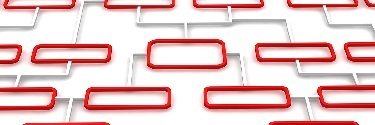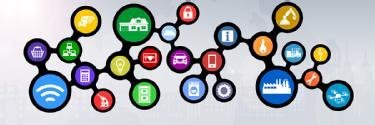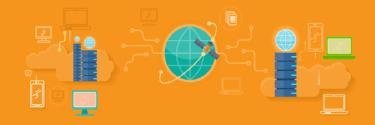DevOps-driven, cloud-native app development
It's time to embrace DevOps. A DevOps transition will make your development process and delivery pipelines faster, more reliable and more scalable. Learn how to automate, collaborate, monitor and optimize your enterprise with examples and tutorials on technologies like Jenkins, Docker, Kubernetes, Terraform, and other cloud-native tools and technologies.
Top Stories
-
Quiz
16 Sep 2025

More AWS Cloud Practitioner practice exam questions
Ready to take the next step in your cloud career? These AWS cloud practitioner practice exam questions will test your knowledge about key AWS services and capabilities. Continue Reading
By- Cameron McKenzie, TechTarget
-
Tip
08 Sep 2025

What are the most common challenges of Agile adoption?
Don't let a rigid interpretation of the Agile Manifesto hinder Agile adoption. Learn to view the challenges of Agile as opportunities for change and growth. Continue Reading
By
-
Video
31 Jan 2020

How to use the Jenkins multi-configuration project
In this Jenkins Matrix project plugin example, create a two-dimensional build job that runs 16 build jobs at once. Continue Reading
By- Cameron McKenzie, TechTarget
-
Tutorial
13 Nov 2019

A Jenkins tutorial for beginners with examples
If you're ready to try Jenkins, this quick start tutorial lays out the specific steps you'll need to take to download and install the CI tool on your local machine. Continue Reading
By- Cameron McKenzie, TechTarget
-
Feature
21 Aug 2019

Can a left shift in Java cause DevOps developer burnout?
DevOps burnout is more common than you think. Pay attention to the details in your Java shift left to make sure your dev and management teams are working toward the same goals. Continue Reading
-
Video
29 May 2019

How to create a private GitHub repository example
The private repository feature is now available in the GitHub free tier. Here's how to create and clone a repository without error messages to derail development. Continue Reading
By- Cameron McKenzie, TechTarget
-
Guide
23 May 2019

Master Git basics and branch into DVCS
This Git guide focuses on some of the most basic information and tips. With a solid foundation, developers will be better equipped to get the most out of Git and Github. Continue Reading
By- Tim Culverhouse and Cameron McKenzie
-
Video
20 Feb 2019

Jenkins creator explains why a successful build job is blue
Instead of the often-recognized red, yellow and green layout for success and failure, Jenkins replaced green with blue. If you've ever wondered why, here is your answer. Continue Reading
By- Cameron McKenzie, TechTarget
-
Tip
31 Jan 2019

Developers find cautious optimism for serverless platforms
Experts urge cautious optimism around serverless development. It has its benefits, but tools that don't work as expected and a developer learning curve can cause some problems. Continue Reading
-
Video
29 Jan 2019

Install the Jenkins Artifactory plugin in 5 easy steps
Jenkins and Artifactory integration can be a major timesaver for DevOps engineers. Follow these five steps for an easy plugin installation in your CI/CD pipelines. Continue Reading
By- Cameron McKenzie, TechTarget
-
Video
15 Oct 2018

How to deploy Docker Hub-hosted microservices in AWS ECS
In this AWS ECS tutorial, we take a Spring Boot app contained in a Docker Hub-hosted image and deploy the associated microservices in AWS using Elastic Container Service. Continue Reading
By- Cameron McKenzie, TechTarget
-
Video
09 Oct 2018

How to use the Jenkins Git Plugin: Tips and tricks
Being able to pull from a source code repository is a given, but here are five features the Jenkins Git Plugin makes available to your build jobs that you didn't even know were there. Continue Reading
By- Cameron McKenzie, TechTarget
-
Video
01 Oct 2018

How to Git started and use the Github Desktop app tool
The GitHub Desktop client has been around for a few years now. In this GitHub Desktop app tutorial, we take a look at how well the tool performs the five basic Git commands. Continue Reading
By- Cameron McKenzie, TechTarget
-
Video
28 Sep 2018

Tough sample DevOps interview questions and answers to tackle
Interested in applying for that DevOps engineer position? Then take a look at these tough, sample DevOps interview questions and answers, and see how well you are prepared. Continue Reading
By- Cameron McKenzie, TechTarget
-
Video
06 Sep 2018

Let's dispel three common Java microservices myths
It's easy to develop Java microservices, but confusion over what they are and how they work tends to muddy the waters. Here, we clarify a few myths pertaining to Java microservices. Continue Reading
By- Cameron McKenzie, TechTarget
-
Video
25 Aug 2018

Tough sample Jenkins interview questions and answers for DevOps engineers
Applying for an engineering job where continuous integration is part of the description? Here are 10 tough Jenkins interview questions to prepare you for the DevOps engineering interview. Continue Reading
By- Cameron McKenzie, TechTarget
-
Quiz
31 Jul 2018

10 Git quiz questions to test your distributed version control skills
Test your distributed version control knowledge with this 10 Git questions quiz. It's a quick test that will see how well you know the basics of the popular DVCS tool. Continue Reading
By- Cameron McKenzie, TechTarget
-
Quiz
24 Jul 2018

Ten Jenkins quiz questions to test your install and config IQ
Here are 10 Jenkins questions designed to test your knowledge of the build tool. Think you know continuous integration well? Take this Jenkins quiz, and find out if you do. Continue Reading
By- Cameron McKenzie, TechTarget
-
Video
17 Jul 2018

A git reset hard example: An easy way to undo local commits and shift head
For those looking to undo a commit, the easiest way to do it is by using the git reset hard command. It's the easy way to reset the HEAD, the index and the working tree as well. Continue Reading
By- Cameron McKenzie, TechTarget
-
Tutorial
12 Jul 2018

Jenkins Git integration: GitHub pull request via the Git plugin
This Jenkins Git integration tutorial demonstrates how to create a freestyle build job that performs a Jenkins GitHub pull request. It's an example of the Jenkins Git plug-in in action. Continue Reading
By- Cameron McKenzie, TechTarget
-
Video
10 Jul 2018

Jenkins parameterized build example with String and Boolean parameters
It's easy to customize your Jenkins jobs when you add parameters to the build. This Jenkins parameterized build example with Boolean and String parameters is the first step to a fresh continuous integration pipeline. Continue Reading
By- Cameron McKenzie, TechTarget
-
Tutorial
28 Jun 2018

5 basic Git commands developers must master: Tutorial with examples
Just getting started with Git or GitHub? If so, there are five basic Git commands you need to master. This Git commands tutorial for beginners takes you through each. Continue Reading
By- Cameron McKenzie, TechTarget
-
Opinion
12 Jun 2018

Jenkins vs. Maven: Compare these build and integration tools
DevOps advocates are often asked for a Jenkins vs. Maven comparison. But those asking often discover that Maven-Jenkins integration is the true path to continuous integration success. Continue Reading
By- Cameron McKenzie, TechTarget
-
Tutorial
11 Jun 2018

Jenkins environment variables list for shell script build jobs
The Jenkins environment variables list outlines the various properties that developers can inject into advanced Jenkins shell scripts and batch programs. Continue Reading
By- Cameron McKenzie, TechTarget
-
Feature
23 May 2018

Why we still use Apache Ant tool in Java build and deploys
Plenty of companies still use the Apache Ant tool in Java development cycles and as part of their continuous deployments. Here's why Apache Ant is still a great choice for CI/CD. Continue Reading
By -
Tutorial
24 Apr 2018

Create your first Jenkins build job: A freestyle project tutorial for beginners
The Jenkins freestyle job is the foundation of Jenkins CI. In this CI tutorial, we show you how to both create a freestyle job and run it using the CI tool. Continue Reading
By- Cameron McKenzie, TechTarget
-
Tutorial
10 Apr 2018

Use the Jenkins OAuth plug-in to securely pull from GitHub
The easiest way to securely push code to your remote GitHub repository from your continuous integration server is to use the Jenkins OAuth plug-in. This tutorial shows you how. Continue Reading
By -
Podcast
14 Mar 2018

Chef's InSpec 2.0 brings compliance automation to the cloud
Enterprises have been quick to adopt automation tools for development and deployment but only recently have organizations started adopting security and compliance automation tools. Continue Reading
By- Cameron McKenzie, TechTarget
-
Feature
05 Mar 2018

How Atlassian built a culture around DevOps developers
DevOps developers are a special breed. Learn how Atlassian introduced tools and techniques that helped both engage and retain those who thrive in a DevOps culture. Continue Reading
-
Feature
20 Feb 2018

How DevOps concepts eluted from cloud computing and service platforms
The popularity of DevOps can be traced back to the emergence of cloud computing. As programmers began scripting their environments, the line between dev and ops began to blur. Continue Reading
By- Cameron McKenzie, TechTarget
-
Podcast
07 Feb 2018

Database automation drives DevOps into the persistence layer
A new breed of software tools is driving DevOps processes deep into the persistence layer, as database automation and continuous deployment come together. Continue Reading
By- Cameron McKenzie, TechTarget
-
Tip
18 Jan 2018

Spring creator Rod Johnson releases API for implementing DevOps
Find out about Rod Johnson's latest project, which promises to simplify the process of implementing DevOps and streamlining the workflow between development and operations. Continue Reading
-
Feature
02 Jan 2018

Creative ways to encourage the integration of DevOps processes
It can be a challenge to get developers to abandon their bad habits and adopt DevOps processes, but Verizon is finding innovative ways to make that happen. Continue Reading
-
Feature
02 Jan 2018

DevOps processes flounder if old business models don't change
Accenture's Mirco Hering explains how manufacturing models for business agility kill DevOps and how software developers can change their thinking to make DevOps processes work. Continue Reading
-
Feature
27 Dec 2017

From bitcoin to deprecated Java, a look at 2017's top opinions
What were the most contested technology topics of 2017? On TheServerSide, issues such as bitcoin blockchains and deprecated Java methods generated the most comments and page views. Continue Reading
By- Cameron McKenzie, TechTarget
-
Podcast
20 Dec 2017

The best way to start creating cloud-native Java applications
How do software engineers transition traditional Java EE development into a world of cloud-native Java? Heptio's Craig McLuckie provides insights on transitioning. Continue Reading
By- Cameron McKenzie, TechTarget
-
News
19 Dec 2017

Top DevOps vendors promise faster releases with fewer bugs
What's the hottest software development trend? If the number of top DevOps vendors taking up space on conference hall floors is an indication, it would have to be merging Dev and Ops. Continue Reading
By- Cameron McKenzie, TechTarget
-
Feature
18 Dec 2017

Will a lack of hardware knowledge lead to a DevOps doomsday?
DevOps professionals are highly detached from the big iron that drives their cloud-based data centers. Will this lack of hardware knowledge lead to a DevOps doomsday? Continue Reading
By- Bob Reselman, CogArtTech
-
Feature
13 Dec 2017

Seven habits of highly effective DevOps consultants
If you're struggling with your DevOps rollout, a qualified consultant can help. Here are seven qualities to look for when deciding among third parties. Continue Reading
By- Cameron McKenzie, TechTarget
-
Tip
27 Nov 2017

Fighting hidden threats with DevOps security best practices
Find out what experts had to say about using DevOps security principles to weave threat resistance into the fabric of the development process. Continue Reading
-
Feature
21 Nov 2017

Trying to make DevOps work? Learn how Nike just did it.
Many organizations struggle as they transition to DevOps. But it can be a challenge making DevOps work. Here we look at how Nike applied DevOps principles and made DevOps work for them. Continue Reading
-
Guide
21 Nov 2017

Everything to know about overcoming digital transformation challenges
As organizations adopt new technologies, like blockchain, IoT devices and deep learning, strategies must be developed to address inevitable digital transformation challenges. Continue Reading
-
Feature
14 Nov 2017

Can DevOps problems actually cause projects to fail?
DevOps isn't perfect. There are times when DevOps problems can overwhelm the potential benefits. So, why do some DevOps projects succeed while others fail? Continue Reading
-
Feature
09 Oct 2017

How blockchain security is driving digital transformations
Whether it is a secure cloud, a secure mobile device or a secure IOT interaction, organizations are making blockchain security a central part of their digital transformations. Continue Reading
By- Tom Nolle, Andover Intel
-
Conference Coverage
04 Oct 2017

Guide to the JavaOne 2017 conference
At JavaOne 2017, the Java community discusses the pinnacles of modern software technologies, including DevOps, mobile applications, digital transformation and, of course, Java. Continue Reading
-
Podcast
27 Sep 2017

Cloud-native apps push static code analysis tools to the limit
The distributed nature of a cloud-native architecture, with microservices deployed to a multitude of containers, can test the limits of static code analysis tools. Continue Reading
By- Cameron McKenzie, TechTarget
-
News
22 Sep 2017

CloudBees, partners add Jenkins services, security
CloudBees, the steward of the Jenkins DevOps platform, has teamed up with partners to provide managed Jenkins services, as well as new security features and database support. Continue Reading
-
Feature
12 Sep 2017

Containers and microservices complicate cloud-native security
As microservices-based applications are deployed to a sea of Docker containers, mitigating against cloud-native security issues is becoming a struggle. Continue Reading
By- Cameron McKenzie, TechTarget
-
Podcast
07 Sep 2017

Microservices and containers can simplify DevOps security
You would think that managing a sea of containers and microservices would make DevOps security difficult, but it may, in fact, make DevSecOps easier. Continue Reading
By- Cameron McKenzie, TechTarget
-
Feature
07 Aug 2017

Edge device developers not addressing IoT security vulnerabilities
Security is problematic when software is deployed behind firewalls, but when you have edge devices out in the wild, IoT security vulnerabilities become even more of a concern. Continue Reading
By- Daisy McCarty, Brand Message Clarity
-
Guide
27 Jul 2017

Effective DevOps tooling for accelerated continuous delivery adoption
Java DevOps tooling is the key to speeding up continuous delivery adoption. This guide covers why and how to consider DevOps tools for business efficiency. Continue Reading
-
Feature
05 Jul 2017

Cloud native adoption means getting the DevOps tooling right
There are so many DevOps tooling options in the world of cloud native computing that many companies looking at a microservices and container based architecture are being overwhelmed by the options. Continue Reading
By- Cameron McKenzie, TechTarget
-
Feature
22 Jun 2017

How microservices patterns made Uber's architecture perform better
How did Uber manage to deal with the inevitable Halloween rush? Applying microservices patterns to their architecture played a big part. Continue Reading
-
Feature
20 Jun 2017

Effective DevOps hinges on automating a continuous delivery pipeline
Many organizations struggle with bringing development and operations together, only to realize that effective DevOps means successfully automating a continuous delivery pipeline. Continue Reading
By- Cameron McKenzie, TechTarget
-
Feature
11 May 2017

Effective DevOps pipelines require a continuous delivery tool chain
The key to an effective DevOps implementation is understanding your tools, and implementing an effective continuous delivery tool chain. Continue Reading
By -
Podcast
09 May 2017

Connecting the 'DevOps, Agile and Java cloud native applications' dots
A concise definition of both DevOps and cloud native computing is elusive, but Cisco's Ken Owens presents a unified theory that pulls together the Java cloud, Agile, microservices and containers. Continue Reading
By- Cameron McKenzie, TechTarget
-
Feature
04 May 2017

DevOps performance teams using AIOps for app performance insights
Find out how enterprise organizations are beginning to leverage algorithmic IT operations to mine performance logs and improve application performance. Continue Reading
-
News
20 Apr 2017

LinuxKit, Moby push developers toward collaborative systems
Docker offers two new projects: a toolkit for building secure, lean and portable Linux subsystems and a way for developers to collaborate on interchangeable components. Continue Reading
-
Podcast
22 Mar 2017

Declarative Jenkins pipeline the latest new feature in DevOps tooling
Looking to get more out of your DevOps tooling? The declarative Jenkins pipeline helps take continuous integration and continuous delivery to new heights. Continue Reading
By- Cameron McKenzie, TechTarget
-
Feature
10 Mar 2017

Why scaling Agile development calls for DevOps toolchain integration
Learn how Tasktop is battling the cost of scaling Agile development and the DevOps toolchain by integrating top tools. Continue Reading
By- Jan Stafford, Features Writer
-
Guide
28 Feb 2017

Developers' guide to deploying microservices and containers
As enterprises move toward more modular and self-contained components, the move toward microservices and container deployment, like Docker, is a natural step. Continue Reading
-
Tip
13 Jan 2017

Is JSON and XML your REST performance bottleneck?
Learn how ASCII encoding formats like JSON and REST can adversely impact server application performance compared with emerging binary formats. Continue Reading
-
Feature
08 Dec 2016

Docker instances become the new norm and adoption goes mainstream
Many organizations use Docker instances for many reasons, although security, data storage and monolithic fears remain barriers to Docker adoption. Continue Reading
By -
Feature
01 Dec 2016

Getting through the three toughest stages of a DevOps transition
Looking to gain increased productivity and software quality by embracing DevOps? Here are the DevOps transitions your company will inevitably go through. Continue Reading
By -
News
10 Nov 2016

How Target improved software delivery by adopting DevOps processes
At the 2016 DevOps Enterprise Summit, Target's Heather Mickman describes the many ways the adoption of DevOps processes improved software delivery. Continue Reading
By- Cameron McKenzie, TechTarget
-
Podcast
09 Nov 2016

How Agile transformations are sparked by successful DevOps adoption
Tasktop's Mik Kersten discusses how successful DevOps adoption projects often lead to large Agile transformations. Continue Reading
By- Cameron McKenzie, TechTarget
-
Podcast
03 Nov 2016

Why you should choose the Go language for microservices development
How can teams simplify microservices development, especially when scaling microservices is the key? Many are turning to the Go programming language and Go kit for answers. Continue Reading
By- Cameron McKenzie, TechTarget
-
Podcast
03 Nov 2016

Bridging the gap between well-designed APIs and DevOps best practices
Automation is the key to running error-free operations, which means well-designed APIs that give access to tasks are among the most important DevOps best practices. Continue Reading
By- Cameron McKenzie, TechTarget
-
Feature
03 Nov 2016

The benefits of container development with Docker
Development with Docker instances is popular among software development teams because it simplifies the process of building and shipping apps. Continue Reading
By -
Answer
06 Oct 2016

When do Agile and DevOps methods conflict?
Expert Chris Ward explains why using Agile and DevOps together may seem ideal, but conflict arises when in practice. Continue Reading
By- Christopher Ward, Consultant
-
Guide
19 Sep 2016

News from JavaOne 2016
What is new with Java in 2016? Here you'll find the most up to date conference news from JavaOne in San Francisco. Continue Reading
-
Feature
16 Sep 2016

Building 3D apps for the future of manufacturing
Find out how 3D app developers are taking advantage of Autodesk's new cloud-based services to build and improve data integration services. Continue Reading
-
News
16 Sep 2016

Easing Jenkins and Docker integration pains at Jenkins World 2016
Many organizations are struggling with Jenkins and Docker integration, but CloudBees CEO Sacha Labourey says guidance can be found at Jenkins World 2016. Continue Reading
By- Cameron McKenzie, TechTarget
-
News
14 Sep 2016

DevOps adoption holds benefits for large and small organizations alike
It's easy for small organizations to embrace DevOps adoption. At Jenkins World 2016, larger organizations are talking about how to achieve success. Continue Reading
By- Cameron McKenzie, TechTarget
-
News
14 Sep 2016

Jenkins World 2016: Why Pipeline is so popular
While there is plenty to discuss at Jenkins World 2016, the Jenkins Pipeline plug-in is clearly the topic getting the most attention. Continue Reading
By- Cameron McKenzie, TechTarget
-
Feature
12 Sep 2016

How a DevOps process can drive better end user experiences
While many organizations adopt a DevOps process to improve deployment and integration, the benefits extend right through to the user experience. Continue Reading
By- Christopher Ward, Consultant
-
Feature
11 Sep 2016

Establishing a coherent API for the Internet of Things (IoT)
The rapid growth of smart devices is inspiring many developers to create applications for home monitoring, health, and other services. But these applications are dependent on early adopters that actually buy and install hardware. Read on to find out how innovative companies are starting to craft IoT applications without this overhead. Continue Reading
-
Feature
31 Aug 2016

Automating development and deployment with Chef and Puppet
Looking for ways to simplify development and deployment? Here we explore the approach the tools Chef and Puppet take to addressing these challenges. Continue Reading
By- Tom Nolle, Andover Intel
-
Feature
29 Aug 2016

Evaluating how second-generation DevOps tooling stacks up
As more organizations adopt DevOps strategies, there is a growing need to evaluate the various DevOps tooling options. Continue Reading
By- Tom Nolle, Andover Intel
-
Podcast
18 Jul 2016

Managed services model addresses cloud-based analysis paralysis
For many applications, an Amazon or Azure cloud might be overkill. In such cases, a managed services model approach just might be the better option, and here's why. Continue Reading
By- Cameron McKenzie, TechTarget
-
Feature
14 Jul 2016

Deciding between full stack developers or Ops engineers
The software development landscape is changing, and developers are being forced to ask themselves to choose between a career as an Ops professional or a full stack developer. Continue Reading
By -
News
13 Jul 2016

Simplified portable applications with Docker and microservices
As the industry moves away from traditional SOA, organizations are instead choosing to create portable applications with SOA and microservices. Continue Reading
By -
News
12 Jul 2016

Don't let unfounded Docker fears deter container technology adoption
Container technology is changing the enterprise software landscape, but many unfounded fears are delaying Docker adoption. Continue Reading
By -
News
22 Jun 2016

New Docker tools to revolutionize the desktop OS
Software containers are a powerful technology, but, finally, Docker tools for Windows and Mac will bring usability to the masses. Continue Reading
By- Cameron McKenzie, TechTarget
-
News
22 Jun 2016

Appease DevOps concerns with container as a service Docker deployments
At DockerCon 2016, the big trend from exhibitors is the container as a service, creating a smooth path for Docker adoption. Continue Reading
By- Cameron McKenzie, TechTarget
-
News
22 Jun 2016

Why build a serverless architecture with microservices and containers?
Many organizations are moving away from the big, monolithic server stacks and are instead building serverless architectures with Docker and microservices. Continue Reading
By- Cameron McKenzie, TechTarget
-
News
21 Jun 2016

Docker security, container performance the hot topics at DockerCon 2016
Operation teams are always concerned about software vulnerabilities, but at DockerCon 2016, vendors are working hard to allay those Docker security concerns. Continue Reading
By- Cameron McKenzie, TechTarget
-
News
21 Jun 2016

Simple Docker image acquisition the key to IBM's container strategy
By making it easier for clients to acquire a Docker image, IBM hopes to see more enterprises adopting a container-based development strategy. Continue Reading
By- Cameron McKenzie, TechTarget
-
News
21 Jun 2016

Docker microservices grab the spotlight at DockerCon 2016
With a move away from SOA-based architectures, along with the container adoption trend, it's not surprising to see more and more people talking about Docker microservices. Continue Reading
By- Cameron McKenzie, TechTarget
-
Feature
13 Jun 2016

How the Docker Engine simplifies DevOps, from staging to deployment
While virtualization is nothing new, the way the Docker Engine creates portable apps that can be replicated from development to deployment is helping simplify all aspects of ALM. Continue Reading
By- Cameron McKenzie, TechTarget
-
Feature
01 Jun 2016

Virtual reality and Android apps steal the Google I/O show
Barry Burd shares his latest update on what's hot at Google I/O 2016, including a projected future that includes more virtual reality and integration into Android apps. Continue Reading
By- Barry Burd, Drew University
-
Feature
08 Jan 2016

Best practices for distributed systems baked into Bitcoin's blockchain architecture
Expect to hear more about Bitcoin and its blockchain architecture in 2016, as the manner in which they crypto-currency works is becoming a best practices for developing distributed systems. Continue Reading
By- Cameron McKenzie, TechTarget
-
News
04 Dec 2015

Get caught up debugging Java apps with containerization
At JavaOne 2015, consultant Daniel Bryant discusses how debugging Java apps within containerization is ramping up. Continue Reading
By- Cameron McKenzie, TechTarget
-
Tip
24 Nov 2015

How Eclipse plans to harmonize Java DevOps for the cloud
Learn about Eclipse Che, the cloud-based version of the Eclipse IDE. Che will simplify the creation of Java DevOps environments on top of the OpenShift cloud platform. Continue Reading
-
Tip
05 Nov 2015

How to put configurable security in effect for an IoT gateway
Implementing security for an IoT gateway is challenging. A software developer shares best practices for developing a dynamic and robust security model. Continue Reading
-
Tutorial
22 Sep 2015

Examine modular code development with Java's Project Jigsaw
Project Jigsaw is the new standard for modular code development in Java. Expert Barry Burd takes an in-depth look at the first early access release. Continue Reading
By- Barry Burd, Drew University
-
Tip
10 Sep 2015

Limited bandwidth may stifle IoT development
When it comes to IoT development, limited network bandwidth could be the weak link in the chain as latency stifles progress. Continue Reading
By- Cameron McKenzie, TechTarget
-
Tip
27 Jul 2015

Simplified user and group management is the key to secure application deployment
A big challenge in securing software is the management of users and groups. Less is often more in this regard, and being able to simplify is the ket to secure application deployment. Continue Reading
By- Cameron McKenzie, TechTarget
-
Feature
06 Jul 2015

Docker containers are growing up and embracing open standards
In this new world where containers are challenging virtualized environments, Docker has had to grow up fast, and not only is it growing up, but it's opening up to new standards as well. Continue Reading
By -
Podcast
24 Jun 2015

Red Hat engineer talks system optimization, containers
In this podcast, a principal software engineer at Red Hat talks about important industry trends, including containerization and system optimization. Continue Reading
By- Cameron McKenzie, TechTarget
-
News
23 Jun 2015

Red Hat preview: App performance with container-based systems
As the 2015 Red Hat Summit takes place, attendees are dealing with the fact that container-based systems have changed the game for app performance. Continue Reading
By- Cameron McKenzie, TechTarget
-
Podcast
15 May 2015

Containerization may mark the decline of virtualization
The popularity of containerization is leaving virtualization in the dust. ZeroTurnaround's Jevgeni Kabanov explains why. Continue Reading
By- Cameron McKenzie, TechTarget


